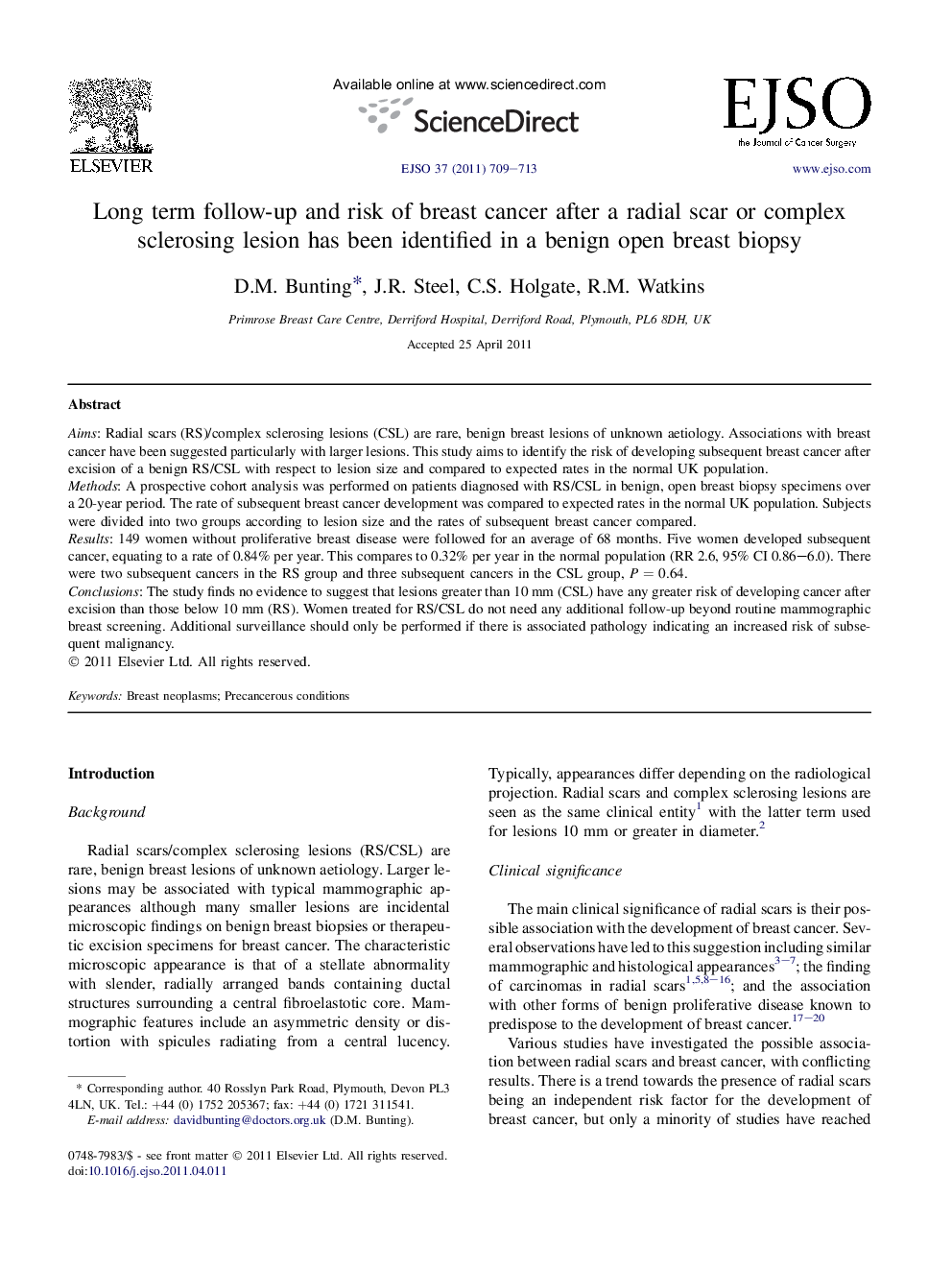| Article ID | Journal | Published Year | Pages | File Type |
|---|---|---|---|---|
| 3986884 | European Journal of Surgical Oncology (EJSO) | 2011 | 5 Pages |
AimsRadial scars (RS)/complex sclerosing lesions (CSL) are rare, benign breast lesions of unknown aetiology. Associations with breast cancer have been suggested particularly with larger lesions. This study aims to identify the risk of developing subsequent breast cancer after excision of a benign RS/CSL with respect to lesion size and compared to expected rates in the normal UK population.MethodsA prospective cohort analysis was performed on patients diagnosed with RS/CSL in benign, open breast biopsy specimens over a 20-year period. The rate of subsequent breast cancer development was compared to expected rates in the normal UK population. Subjects were divided into two groups according to lesion size and the rates of subsequent breast cancer compared.Results149 women without proliferative breast disease were followed for an average of 68 months. Five women developed subsequent cancer, equating to a rate of 0.84% per year. This compares to 0.32% per year in the normal population (RR 2.6, 95% CI 0.86–6.0). There were two subsequent cancers in the RS group and three subsequent cancers in the CSL group, P = 0.64.ConclusionsThe study finds no evidence to suggest that lesions greater than 10 mm (CSL) have any greater risk of developing cancer after excision than those below 10 mm (RS). Women treated for RS/CSL do not need any additional follow-up beyond routine mammographic breast screening. Additional surveillance should only be performed if there is associated pathology indicating an increased risk of subsequent malignancy.
